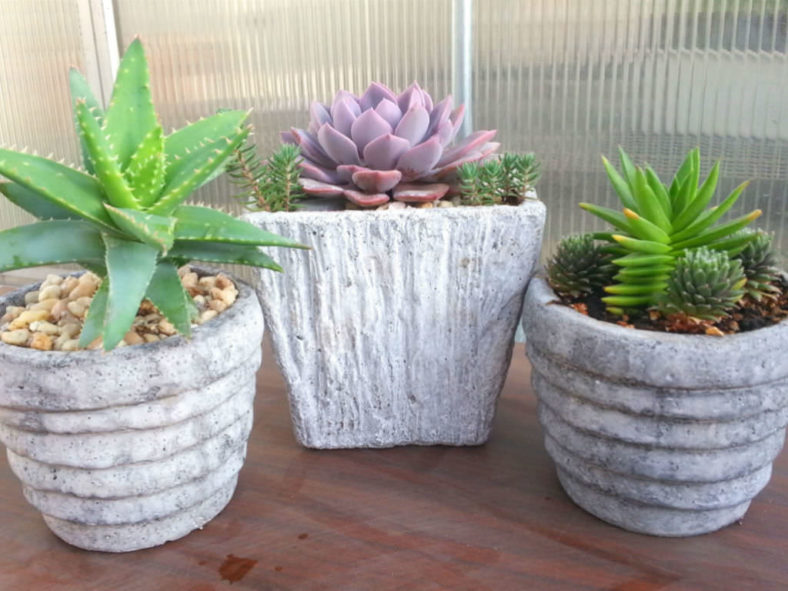Succulents have different needs from most other plants. Here are the most common mistakes when growing succulents and how to avoid them.
1. Overwatering
The biggest mistake people make with succulents is overwatering them. Waterlogged roots rot, the stem becomes squishy, and leaves fall off. On the surface, your succulent may look okay until one day, the lower leaves have gone slimy and black. You may be overwatering if any of your leaves look yellow, translucent, or slimy. Succulent roots are susceptible to root rot, so be careful with your watering habits! Most succulents only need to be watered once every 1 to 2 weeks. When they are actively growing in spring and summer, for most succulents, drench the soil once a week. When dormant, usually in fall and winter, do so once a month. It is best to let their soil dry out completely before watering again!
2. Using the Wrong Container
Succulents need well-draining soil! They also need well-draining containers! Containers with no drainage holes typically retain far too much water for succulents (and are also susceptible to overheating, which brews bacteria). Your plants are far less likely to do well in these. So, while you may love repurposing that galvanized steel bucket as a planter, be sure to drill holes in the bottom first (or be prepared to deal with many potential issues!) You would be best with wood, terra cotta, or hypertufa containers that can easily breathe.

3. Using the Wrong Soil
The first thing you need to know is that succulent roots do not get water from direct contact. Instead, they absorb the water molecules in the air. This is why having a succulent sitting in sopping wet soil is problematic and makes the plant rot. Your roots do not suck water up as readily, and your soil can stay wet for much longer! This could lead to many problems, from plant gnats to mold. Succulents typically do not do well in conventional garden soil unless you rarely water. You will want a well-draining soil mix. You can buy a succulent mix at a garden center, but you can always mix your own!
4. Trying to Squeeze Too Many in One Space
Succulent arrangements are gorgeous, but they are best as temporary decorations! While succulents can take some "squeezing" better than most plants, at a certain point, close becomes too close, and they reach a size threshold in which they can no longer compete for nutrients! So if you have a jam-packed succulent arrangement and find some plants are withering or dying away, it may be time for some separation.
5. Keeping Them in a Windowless Room
When succulents are indoors, it is often hard to get enough sunlight. They generally need about 6 hours a day. This can be hard to achieve in a cubicle or bathroom. So if you want to have a succulent in these locations, it is best to use other methods of getting your plants enough light, such as putting them outside or in a bright window for the weekend, or investing in grow lights! Remember, these are naturally desert plants and deal with some of the sunniest and driest environments on the planet.
6. Fertilizing Improperly
A common succulent faux pas is the idea that they do not need fertilizer! Like any other plant, they need a variety of macro and micronutrients to survive. While they get along just fine without it, sometimes some fertilizer can be the key to having lush and green plants.
Source: rootandfettle.com
Links
- Succupedia: Browse succulents by Scientific Name, Common Name, Genus, Family, USDA Hardiness Zone, Origin, or cacti by Genus